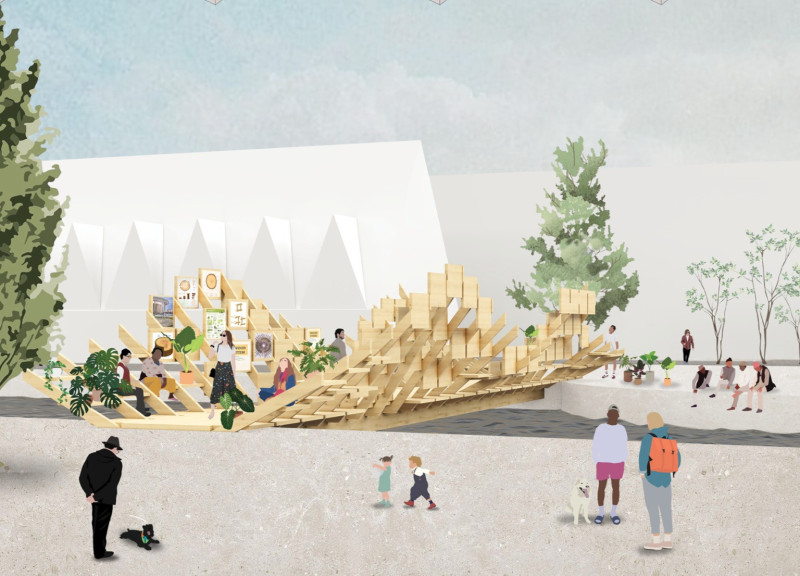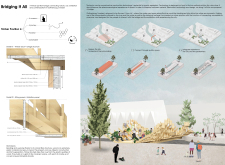5 key facts about this project
At the heart of this architectural endeavor is the pavilion's multifunctional nature, serving as both a bridge and a venue for exhibitions. This dual-purpose framework encourages pedestrian and cyclist movement while offering a place for social gatherings and cultural events. The design facilitates a seamless flow of activity, inviting visitors to explore both the physical space and the surrounding landscape.
The architectural elements showcase a distinct approach to material usage, prominently featuring timber. Laminated timber beams form a robust structural framework while allowing for gracefulness in design. The use of curved screwed laminate boards exemplifies a contemporary understanding of timber’s versatility, creating fluid lines that resonate with the natural dynamics of water. This commitment to using natural materials provides not only aesthetic appeal but also aligns with sustainable building practices, minimizing the project's carbon footprint and enhancing its ecological impact.
Significant details of the design provoke engagement and reflection. Wooden exhibition panels serve functional purposes by creating exhibit spaces and spatial dividers while reinforcing the use of warm, organic materials that welcome visitors. The integration of natural fiber materials further emphasizes an environmentally conscious ethos, promoting a vision of architecture that respects and enhances its surroundings.
The uniqueness of “Bridging It All” lies in its ability to merge architectural form with contextual needs. The pavilion's design encourages a sense of community and fosters relationships among users. By providing adaptable spaces that can accommodate various activities, the project demonstrates a forward-thinking response to urban challenges, prioritizing public interaction and collaboration. The pavilion stands as a gathering point, encouraging leisurely exploration and social connection while serving as a hub for cultural representation.
In addition, the project emphasizes the importance of the river as a defining element of Gothenburg’s identity. By enhancing accessibility to the water, the pavilion enriches public experiences and activates the riverbank, transforming it into a lively area for both residents and visitors. The design reflects a deep understanding of social dynamics, prioritizing spaces that invite people to engage with their environment physically and socially.
To fully appreciate the architectural nuances and the thoughtful design process behind “Bridging It All,” readers are encouraged to explore the project presentation further. This includes detailed architectural plans, architectural sections that reveal construction intricacies, and architectural designs that highlight innovative design approaches and concepts. These materials provide insights into the meticulous considerations that went into creating a project that is both functional and aesthetically pleasing.























